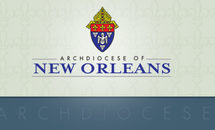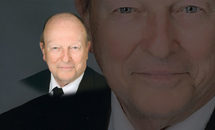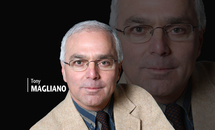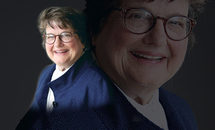-

by Site Administrator
Official Appointments In order to provide pastoral governance for the Archdiocese of New Orleans, Archbishop Aymond has made the following appointments: Reverend Henry Davis, S.S.J., as Dean of the Cathedral Deanery, effective August 1, 2019.
Read More
-

by Site Administrator
Jesuit Brother William J. Dardis, a legendary figure at Jesuit High School, died July 10 in the school residence where he had lived for 55 years. He was 79 years old, a Jesuit for almost 61 years and in final vows for 45 years.
Read More
-

by Site Administrator
It is there on YouTube for all to see: Former Saints head coach Jim Mora and former New Orleans TV sports director Ron Swoboda debating the idea of a meaningless game.
Read More
-

by Site Administrator
NOTRE DAME SEMINARY’S LAY ENRICHMENT, free summer presentation, “Parenting in the Digital Age: Managing Fun and Safety Online” with Jason Angelette and Dr. Mario Sacasa, rescheduled to Aug. 21, 6:30-7:30 p.m., Notre Dame Seminary. Register: www.nds.edu/les or email layprograms@nds.edu.
Read More
-

by Jonelle Foltz
The recent tragic mass shootings in Dayton, Ohio and El Paso, Texas, killing at least 29 people, point to an ongoing epidemic of mass shootings in the United States. As of Aug. 5, the 217thday of the year, there were 255 mass shootings – more mass shootings than number of days so far this year.
Read More
-

by Site Administrator
In partnership with the Catholic Book Store, Sister of St. Joseph Helen Prejean will speak and sign copies of her new book, “River of Fire: My Spiritual Journey,” Aug. 10 at 1 p.m. in the St. Rita School cafeteria, 65 Fountainbleau Drive, New Orleans.
Read More
-

by Site Administrator
Along with several other schools in the Archdiocese of New Orleans, St. Scholastica Academy has been on the receiving end of awards from The Joe W. and Dorothy Dorsett Brown Foundation over the years.
Read More
-

by Site Administrator
When I taught high school religion prior to entering seminary, one of the most common complaints that I heard from students was, “Mass is boring.” Whenever I heard that type of objection, I would always respond by explaining that if they really knew what was going on, they would not think Mass was boring. In fact, they would be at Mass every Sunday and every day of the week, if possible. They would also make it to the adoration chapel every day.
Read More
-

by Site Administrator
After months of preparation for the implementation of the Third Edition of the Roman Missal, Catholics in the pew finally will hear and recite new English translations of Mass prayers and responses on the First Sunday of Advent Nov. 26-27.
Read More
-

by Site Administrator
One of the most important things to do in order to prepare for Mass is to plan your schedule around Mass – not Mass around your schedule. By planning your day around spending time worshipping God, you automatically put God in the place of highest priority. Instead of trying to find a Mass time that fits your schedule or jumping from parish to parish, you are able to worship with your local parish community weekly. Being rooted in one parish helps build a regular community of believers, a family of faith. If we do not plan our day around receiving the Eucharist, however, our day can easily become so filled that we do not have time to “keep holy the Sabbath” (Exodus 20:8). When traveling, this takes on an even greater significance. Times and locations of Masses around the world are available online at www.masstimes.org.
Read More
-

by Site Administrator
When Catholics enter church, we should bless ourselves by dipping our finger in holy water from either the baptismal font or from a holy water font and making the sign of the cross. This act serves as a reminder of our baptism, when we were claimed for Christ for the first time. In baptism, the priest or deacon poured holy water over our head and said, “I baptize you in the name of the Father, and of the Son, and of the Holy Spirit.”
Read More
-

by Site Administrator
Once we have readied ourselves for the sacred mysteries through interior prayer and commitment, the first thing we witness is an entrance procession accompanied by music. Processions accompany all forms of religious worship and can be seen in many examples of the church’s liturgical life: Mass (entrance, presentation of gifts and recessional), eucharistic processions, Palm Sunday processions with palms, funeral processions, etc. In Scripture, we find examples of processions with the Ark of the Covenant (2 Samuel 6, 1 Kings 8) and in Jesus’ triumphant entry into Jerusalem (Mark 11, Matthew 21, Luke 19, and John 12).
Read More
-

by Site Administrator
Catholics begin and end all prayers by signing themselves in the shape of the cross. While this is something that often distinguishes Catholic Christians from non-Catholic Christians, it is biblically based. At the end of Matthew’s Gospel, Jesus gives his followers the great command to make disciples of all peoples. He said, “Go, therefore, and make disciples of all nations, baptizing them in the name of the Father and of the Son and of the Holy Spirit” (Matthew 28:19).
Read More
-

by Site Administrator
It may seem strange that almost at the beginning of Mass, there is a mention in the Penitential Act of our sinfulness. The Penitential Act includes a moment for us to consider our sins and plead for God’s mercy. Why should we begin with a confession of our sins and an acknowledgment of our weakness? If we look in Scripture, we see several examples where God has chosen to reveal himself in some way to his children. These encounters are marked by the same emotion in those to whom God reveals himself: holy fear and awe as individuals become aware that they are unworthy to be in his presence. Moses’ encounter with the burning bush offers a great example of this, as well as Adam and Eve in the Garden of Eden (Exodus 3; Genesis 3).
Read More
-

by Site Administrator
Every liturgy has a focus and a theme given by the church in the readings, prayers and the liturgical calendar. This focus helps us to concentrate on some essential aspect of our faith so that we do not become overwhelmed by the vast mystery and awe that is so inherent in God himself. Perhaps the most guiding aspect of this theme comes from the readings themselves or from the liturgical calendar, if it is a particular feast. But the first true outline and hint of this focus comes from the Opening Prayer that follows the Penitential Rite and Gloria, after the priest invites us to prayer with the words, “Let us pray.” This Opening Prayer is traditionally known as the “Collect” and it can be chanted or recited by the celebrant. This Opening Prayer gets its proper name because it collects the prayers of all the faithful gathered to pray and offers them to God through the prayer of the priest.
Read More
-

by Site Administrator
After the Introductory Rites, the community of believers sits for the readings. While some non-Catholics often describe Mass as Catholic calisthenics, the physical postures that we use during the liturgy are not arbitrarily picked. Rather, they often represent what we are spiritually supposed to be doing. Sitting, for example, is a position of receptivity. Sitting allows us to rest and to attentively listen to the readings being proclaimed.
Read More
-

by Site Administrator
Following the first reading, there is a moment of silence to reflect on the Word of God that was just proclaimed. After reflecting on the Scripture message, all are invited to respond by singing a response taken from the Book of Psalms. It is called the responsorial psalm because it is our response to the Word of God. There is a scriptural refrain that we pray after each stanza of the Psalm. The Book of Psalms is chosen because it has expressed the faith of believers for centuries and is filled with prayers of praise, thanksgiving, repentance, sorrow, trust and hope that serve as an appropriate response to the reading just proclaimed.
Read More
-

by Site Administrator
While sitting is a position of receptivity for the other two readings, we stand for the Gospel as a sign of respect for the words of Jesus and to manifest an eagerness and attentiveness to hear his Word. This makes sense if we consider our everyday experience of greeting a guest. If we are eager to meet someone important who is about to enter the room, we would stand out of respect. In the same way, we stand to greet Christ and to anticipate the proclamation of his Good News.
Read More
-

by Site Administrator
After hearing the Word of God in the Readings, Responsorial Psalm and the Gospel, the congregation sits for a reflection on the Word of God offered by the bishop, priest or deacon. This reflection is known as the homily and is required for every Sunday and Holy Day of Obligation, but is encouraged at all Masses (Canon 767).
Read More
-

by Site Administrator
On Sundays and solemnities, after the homily, the congregation stands for the Creed or Profession of Faith. The name “Creed” comes from its opening word in Latin – “Credo,” meaning “I believe.” This beautiful prayer is a summary statement of our faith that was developed as a result of two great ecumenical councils of the church: Nicaea I (in the year 325) and Constantinople I (381).
Read More
See More



















